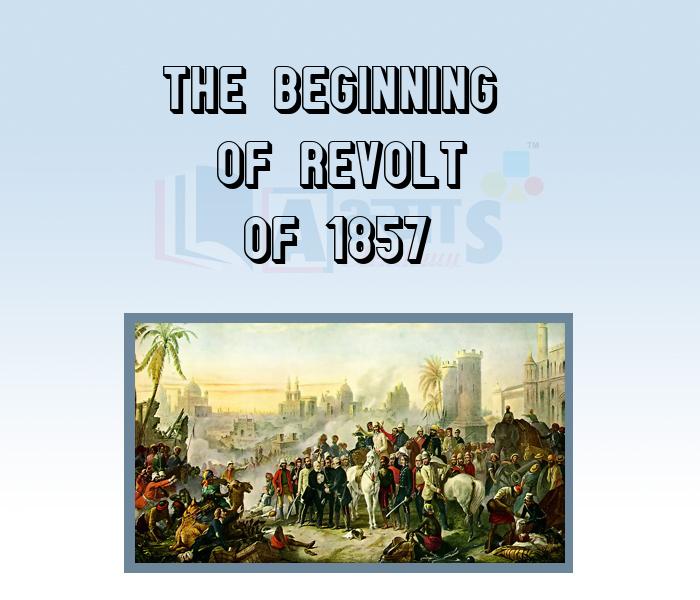The Beginning of Revolt of 1857











The Beginning of Revolt of 1857
The earliest incident being the revolt in the 19h Native Infantry in Berhampur 29th March 1857- First spark of revolt at Barrackpore in Bengal where Mangal Pandey killed the British adjutant and was later hanged for tiring on senior officers. 10th May 1857-Ninety sepoys of third Native Regiment at Meerut revolted on the issue of the greased cartridges. After their trial and execution, entire garrison in Meerut revolted and raised the cry of 'Delhi Chalo'.
Immediate Reason
Beginning of Rebellion
One of the great leaders of the Revolt of 1857 was Maharani Laxmibai of Jhansi died on 17 June _______________________. | |||
| Right Option : B | |||
| View Explanation | |||
Who among the following fought against the British in 1857 Revolt ? I. Kunwar Singh II. Tantya Tope III. Nana Saheb IV. Mailavi Ahmudullah | |||
| Right Option : D | |||
| View Explanation | |||
Match the following :
| |||||||||||||
| Right Option : B | |||||||||||||
| View Explanation | |||||||||||||
Students / Parents Reviews [10]
My experience with Abhyas academy is very good. I did not think that my every subject coming here will be so strong. The main thing is that the online tests had made me learn here more things.

Hiya Gupta
8thBeing a parent, I saw my daughter improvement in her studies by seeing a good result in all day to day compititive exam TMO, NSO, IEO etc and as well as studies. I have got a fruitful result from my daughter.

Prisha Gupta
8thAbhyas is a complete education Institute. Here extreme care is taken by teacher with the help of regular exam. Extra classes also conducted by the institute, if the student is weak.

Om Umang
10thAbhyas Methodology is very good. It is based on according to student and each child manages accordingly to its properly. Methodology has improved the abilities of students to shine them in future.

Manish Kumar
10thA marvelous experience with Abhyas. I am glad to share that my ward has achieved more than enough at the Ambala ABHYAS centre. Years have passed on and more and more he has gained. May the centre flourish and develop day by day by the grace of God.

Archit Segal
7thI have spent a wonderful time in Abhyas academy. It has made my reasoning more apt, English more stronger and Maths an interesting subject for me. It has given me a habbit of self studying

Yatharthi Sharma
10thIt was good as the experience because as we had come here we had been improved in a such envirnment created here.Extra is taught which is beneficial for future.

Eshan Arora
8thMy experience with Abhyas is very good. I have learnt many things here like vedic maths and reasoning also. Teachers here first take our doubts and then there are assignments to verify our weak points.

Shivam Rana
7thMy experience was very good with Abhyas academy. I am studying here from 6th class and I am satisfied by its results in my life. I improved a lot here ahead of school syllabus.

Ayan Ghosh
8thOne of the best institutes to develope a child interest in studies.Provides SST and English knowledge also unlike other institutes. Teachers are co operative and friendly online tests andPPT develope practical knowledge also.
